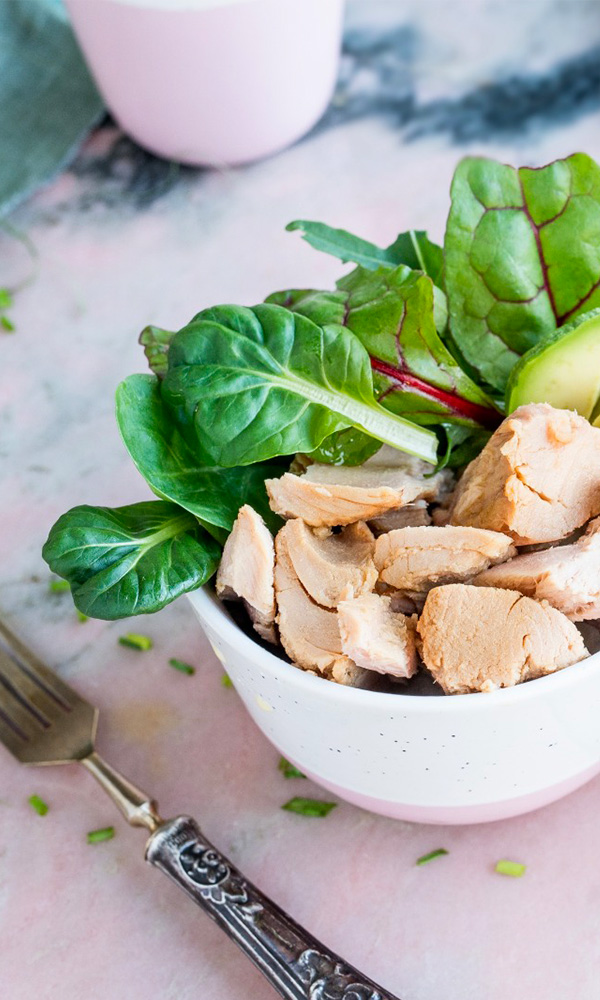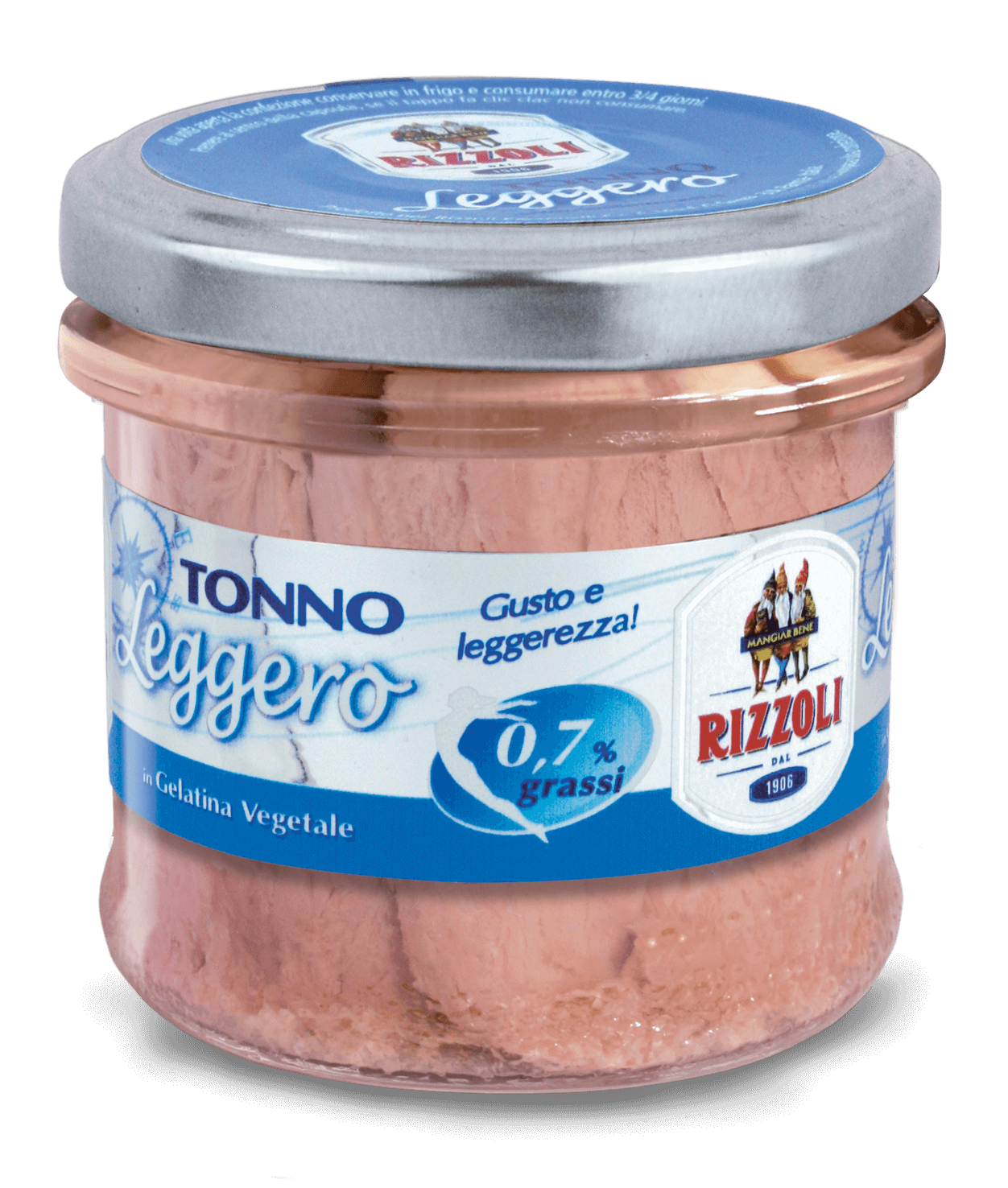FILL UP WITH IODINE!
Did you know that iodine, an ally against stress, exhaustion and hypothyroidism, is only available through food? And 100g of tuna provides 11% of your daily requirement.
ENG / ITA

FILL UP WITH IODINE!
Did you know that iodine, an ally against stress, exhaustion and hypothyroidism, is only available through food? And 100g of tuna provides 11% of your daily requirement.
FAI IL PIENO DI IODIO!
Sai che lo iodio, alleato contro stress, spossatezza e ipotiroidismo, si assume solo attraverso gli alimenti? E 100g di tonno ne apportano l’11% del fabbisogno quotidiano.

Protein for everyone
Low in fat, zero in carbohydrates, tuna is also ideal for sportsmen and women because of its high protein content: 25g per 100g of product. It is a food suitable for children and the elderly: it promotes the growth of muscle mass and reduces the onset of sarcopenia.
A sea of vitamins
Present in tuna are vitamins B12, D, A and B3: D, at a concentration of 25µg per 100g, meets the daily requirement of an adult and promotes healthy bone tissue while A makes tuna a “friend” for your eyesight.
Natural antioxidant
Tuna is a natural source of antioxidants, thanks in part to the presence of concentrated selenium: 90µg per 100g of product. Selenium also assists in the formation of thyroid hormones for the correct functioning of the metabolism.
Source of phosphorus
Tuna also contains iodine and phosphorus in high concentrations. Phosphorus enables the correct absorption of calcium in the intestine, which is essential, among other things, in bone formation and energy production.

Proteine per tutti
Pochi grassi, zero carboidrati, il tonno è ideale per gli sportivi anche per l’alto tasso di proteine: 25g su 100 di prodotto. È un alimento adatto a bambini e anziani: favorisce la crescita della massa muscolare e riduce l’insorgere della sarcopenia.
Un mare di vitamine
Presenti nel tonno sono le vitamine B12, D, A e B3. La D, nella concentrazione di 25µg ogni 100g, soddisfa il fabbisogno giornaliero di un adulto e favorisce la salute del tessuto osseo. La A rende il tonno un “amico” della vista.
Antiossidante naturale
Il tonno è una naturale fonte di antiossidanti, grazie anche alla presenza di selenio concentrato: 90µg ogni 100g di prodotto. Il selenio coadiuva anche la formazione degli ormoni tiroidei per il corretto funzionamento del
metabolismo.
Fonte di fosforo
Nel tonno sono presenti anche iodio e fosforo in ottima concentrazione. Il fosforo consente il cor-retto assorbimento del calcio nell’intestino, fondamentale, tra l’altro, nella formazione delle ossa e nella produzione di energia.

Cardiologist
Massimo Gualerzi is a cardiologist and an expert in prevention and rehabilitation of cardiovascular diseases. For 15 years he was a medical director in the Cardiovascular Prevention and Rehabilitation Unit of the Don Gnocchi Foundation at the University of Parma. Since 2009 he has been a contract professor at the University of Parma. He holds courses for doctors and paediatricians all over Italy on the subject of wellbeing and SuperHealth, in which he explains how to administer the “medicines of the future”: sporting activity, a correct diet and a conscious approach to health.

Cardiologo
Massimo Gualerzi è cardiologo, esperto in prevenzione e riabilitazione delle malattie cardiovascolari. È stato per 15 anni dirigente medico nell’Unità di prevenzione e riabilitazione cardiovascolare della Fondazione Don Gnocchi all’Università di Parma. Dal 2009 è Professore a contratto dell’Università degli Studi di Parma. Tiene corsi rivolti a medici e pediatri in tutta Italia sui temi del benessere e della SuperSalute, nei quali spiega come somministrare i “farmaci del futuro”: attività sportiva, corretta alimentazione e un approccio consapevole alla salute.
The Superhealthy recipe
Massimo Gualerzi
Spaghetti with tuna and pine nuts
INGREDIENTS
• Rizzoli light tuna
• Spaghetti 80 g
• Cherry tomatoes 50 g
• Dried tomatoes 20 g
• Thyme
• Salt to taste
• Pistachio granules 20 g
METHOD
Wash the cherry tomatoes, cut them slightly at the base with the tip of a knife.
Blanch them in water for about 15 seconds, then transfer them to ice water to make peeling easier. Cut up the tomatoes and set them aside.
Bag the pine nuts and crumble them with a meat mallet (taking care not to pulverise them).
Place the chopped tomatoes in a pan with a little water and leave to cook on a low flame for 10 minutes and adjust the salt.
Once the pasta is half cooked, add a couple of ladles of cooking water to the pan with the cherry tomatoes, drain the pasta in the pan, add 2/3 of the tuna and the thyme.
Finish cooking the spaghetti in the pan. In this way, the pasta will release the starch it contains, thus enhancing the creaminess of this first course.
Serve the spaghetti on a plate, add the remaining tuna, the sun-dried tomatoes and sprinkle with pine nut kernels.
PRODUCT USED
Fished in the open sea and processed by hand, in full respect of ancient artisan traditions.

La ricetta Supersalute
Massimo Gualerzi
Spaghetti con tonno e pinoli
INGREDIENTI
• Tonno Leggero Rizzoli
• Spaghetti 80 g
• Pomodorini datterini 50 g
• Pomodori secchi 20 g
• Timo q.b.
• Sale q.b.
• Granella di pistacchi 20 g
Metodo di preparazione
Lavare i pomodorini, inciderli leggermente con la punta del coltello nella parte inferiore.
Sbollentarli in acqua per circa 15 secondi, poi trasferirli in acqua e ghiaccio per facilitare la spellatura. Tagliare i pomodori e metterli da parte.
Insaccare i pinoli in una busta e sbriciolarli con un batticarne (prestando attenzione a non polverizzare il prodotto).
Posizionare i pomodorini tagliati in una padella con poca acqua lasciar, cuocere a fiamma bassa per 10 min e regolare di sale.
Una volta che la pasta raggiungerà la metà cottura,aggiungere un paio di mestoli di acqua di cottura nella padella dei pomodorini, scolare la pasta nella padella, aggiungere 2/3 di tonno e il timo.
Completare la cottura dello spaghetto all’interno della padella. In tal modo, la pasta rilascerà l’amido in essa contenuto giovando sulla cremosità di questo primo piatto.
Impiattare gli spaghetti, aggiungere il restante Tonno, i pomodori secchi e spolverare con la granella di pinoli.
PRODOTTO UTILIZZATO
Pescato in mare aperto e lavorato a mano, nel pieno rispetto delle antiche tradizioni artigiane.

ENG / ITA
